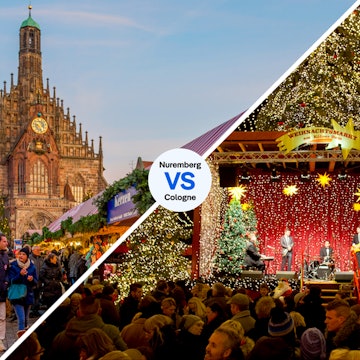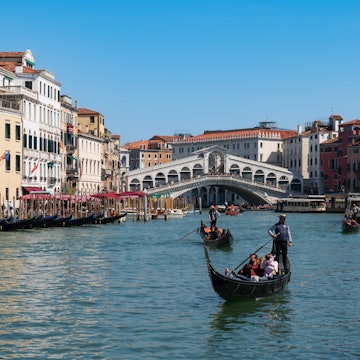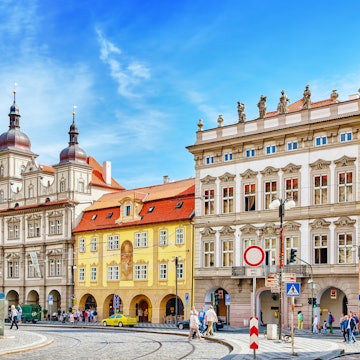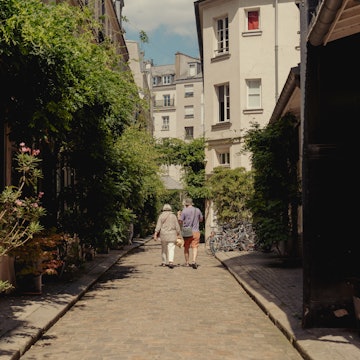

Skyline of Brno city. Matyas Rehak/Shutterstock
The storybook mystique and historic beauty of Prague is well known, but there is more to Czechia – or the Czech Republic – for travelers with time to explore. Most visitors come to Prague and Czechia in summer (from June through August), and it’s not hard to see why. The days are long (in late June, it stays light until 10pm), the weather is sunny, and just about everything a visitor might want to do is open.
Prague, though, can get uncomfortably crowded during the high season. Add in the potential for a midsummer heat wave, and you have the ingredients for a less-than-optimal stay. For this reason, we’d suggest traveling in spring or autumn, when the crowds are lighter and the temperatures are cooler. September and May are two of the best months to visit, offering pleasant weather and fewer tourists.
For budget-conscious travelers, take note that January and February are the cheapest months to visit, due to the colder weather and lower occupancy rates. Bear in mind that some attractions, like castles and museums - particularly in smaller towns - shut from October to April.
For those looking to explore beyond the capital, a week to ten days is ideal for experiencing both Prague and the country’s scenic towns, historic sites, and national parks. If time is limited, a shorter visit of four to five days can still offer a solid introduction to Czechia’s highlights.
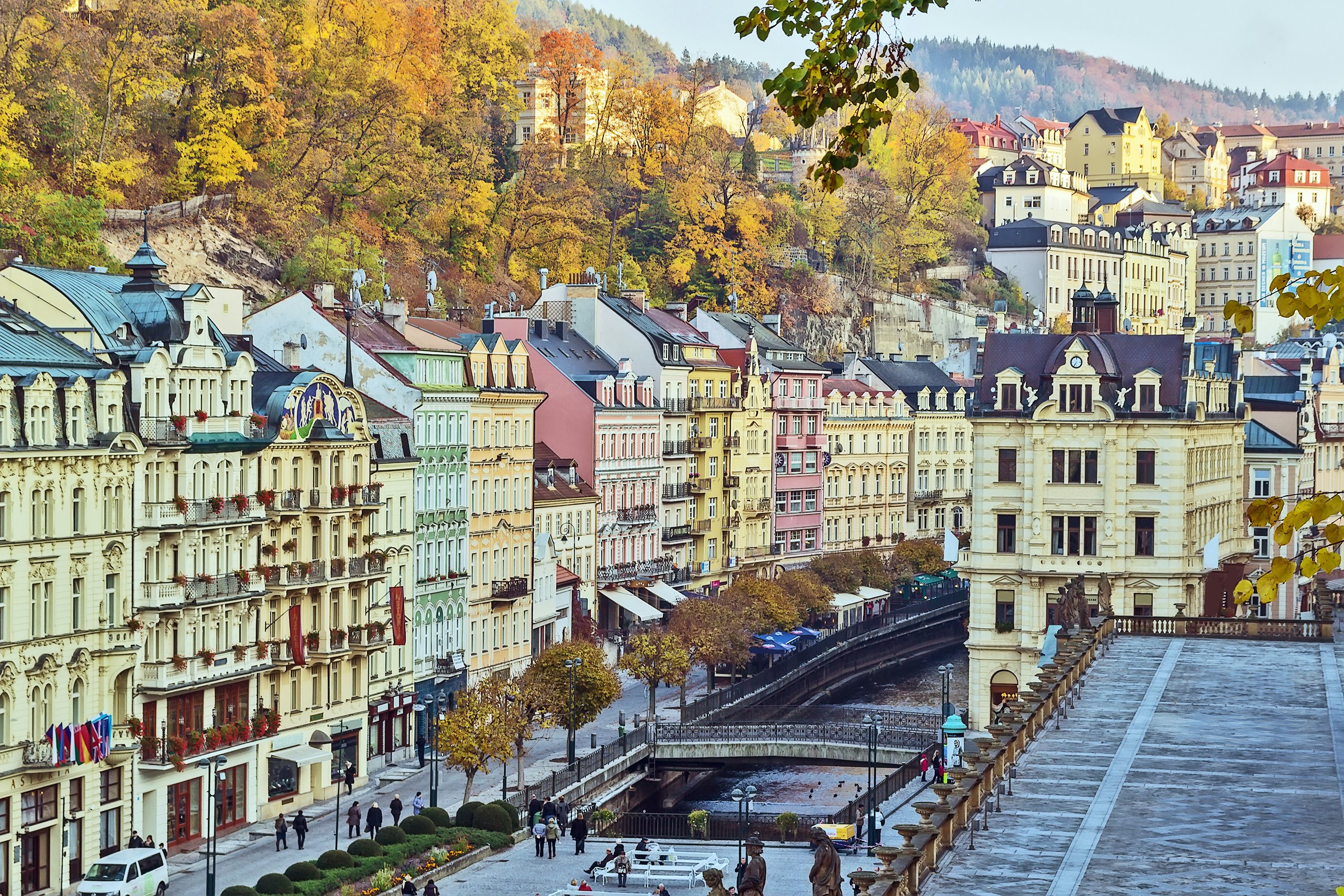
September to November is best for fall foliage and food festivals
September is the best month to travel when the weather is still warm, but the crowds have evaporated. Average temperatures in Prague range from 17–22°C (63–72°F) in September, cooling to 7–12°C (45–54°F) by November. Mushroom pickers head to the woods in early fall, while hikers take advantage of crisp, clear days. October is arguably the best time to hit the Czech Switzerland trails, as the forests take on a vibrant mix of reds, oranges and yellows.
However, it’s important to be prepared for the possibility of an early winter in the higher-elevation areas like the Krkonoše and Jeseníky Mountains, where snowfall can arrive as early as late September. Early autumn often brings the season's first snowfall to mountainous parts of the country.
In September, wine festivals are in full swing, with notable events like Czechia’s premier Znojmo Wine Festival in South Moravia and Pálavské vinobraní in Mikulov, both celebrating the regions’ long-standing winemaking traditions. Additionally, Prague Burgerfest, held at the city's Výstaviště exhibition grounds, stands out as one of Prague's most popular food festivals. If craft beer is more your thing, head to Plzen for the Pilsner Fest, a city beer festival that takes place in October.
As autumn progresses, the season’s flavors take center stage. St. Martin's Day, on November 11, is a tradition marked by the arrival of young wine and a feast of roast goose, particularly in Moravian wine regions and Prague’s traditional restaurants. Český Krumlov has a lull in November, making it the best month to visit. While rain is fairly common in autumn, misty days enhance the town’s medieval charm, especially when strolling its winding streets or ducking into a cozy cafe.

March to May is best for blooms and outdoor activities
Spring truly is a glorious season in Prague and around the country. By March, temperatures begin to warm, and by April, Czechia's parks and gardens burst into life with pink and yellow blossoms. Daytime highs range from 10–15°C (50–59°F) in March, climbing to 16–22°C (61–72°F) by May.
One of the season’s more unusual traditions is Burning of the Witches (Pálení čarodějnic), celebrated on April 30. This centuries-old ritual has pagan origins and marks the transition from winter to spring. Communities across the country gather to light bonfires, symbolizing the burning away of winter’s darkness, while enjoying food, music, and festivities. In Prague, large bonfires are lit in parks such as Ladronka and Kampa, drawing crowds for a lively night of celebration.
Musical events also thrive in spring. The Prague Spring International Music Festival is the undisputed high point of the cultural calendar, opening with a rousing rendition of Má vlast (My Country) by Czech composer Bedřich Smetana. There’s also The Festival of Songs in Olomouc, a five-day celebration of choral music, which takes place in May or June.
Spring is also the perfect time to enjoy Prague’s outdoor spaces. Prague’s Petřín Hill is a favorite destination in April and early May, when its cherry blossoms are in full bloom, creating a dreamy pink canopy over the park. Outside the city, Czech Switzerland (České Švýcarsko) is a real treat for hikers in late spring, when the trails are dry and the landscapes are lush and green.
For those looking to enjoy the city’s emerging warmth, Karlín’s riverfront has become a hotspot for outdoor dining and drinks in the spring and summer. As the season progresses, Prague’s beer gardens come alive, with Přístav 18600 being a favorite open-air spot along the river. With lower prices, fewer crowds, vibrant festivals, and stunning nature, spring in the Czech Republic offers the best of both worlds.

December to February is best for budget travel and winter charm
Prices for lodging in Prague drop considerably during the colder months from November through March – except for the busy Christmas, New Year, and Easter holidays. Temperatures in Prague range from 0 to 7°C (32–45°F) in November, dropping to -5 to 3°C (23–37°F) in January and February.
Winter here can be magical, with Christmas markets starting in late November, mulled wine, and a quieter mood after New Year. Wandering Prague’s historic streets on a snowy winter Wednesday - with twinkling seasonal decorations, and cozy cafes offering respite from the cold - must be one of the most magical experiences in Czechia.
Cold, blustery days mean tourists and locals alike spend more evenings cozying up in quintessential Czech pubs, essentially the country’s collective living room, where people gather to meet friends, catch up on news, and enjoy a meal. Winter is also a great time to explore Prague’s Staré Město (Old Town), where landmarks like the Old Town Hall, Astronomical Clock, and Church of Our Lady Before Týn feel even more atmospheric under a dusting of snow. The historic squares take on a romantic winter glow, and the Christmas market at the Church of Saint Ludmila in Vinohrady rivals the more famous one in Old Town Square with fewer crowds.
Looking to get active? While Czechia may not be the first place most think of when they are looking for a winter sports destination, this largely mountainous country has lots of under-the-radar snow fun, especially for cross-country skiing and snowshoeing.
The Krkonoše Mountains in North Bohemia are home to popular ski resorts like Špindlerův Mlýn, Pec pod Sněžkou, and Harrachov, while quieter options include Klínovec in the Krušné Mountains, Špičák and Zadov in Šumava, and Deštné in the Orlické Mountains. Cross-country skiing, snowshoeing and winter hiking have grown in popularity, with well-maintained trails in the Jizerské Mountains, the Highlands Region, and the Slavkovský Forest. From December to March, snow is guaranteed in the mountains, and on particularly cold days, locals gather for ice hockey matches on frozen lakes.
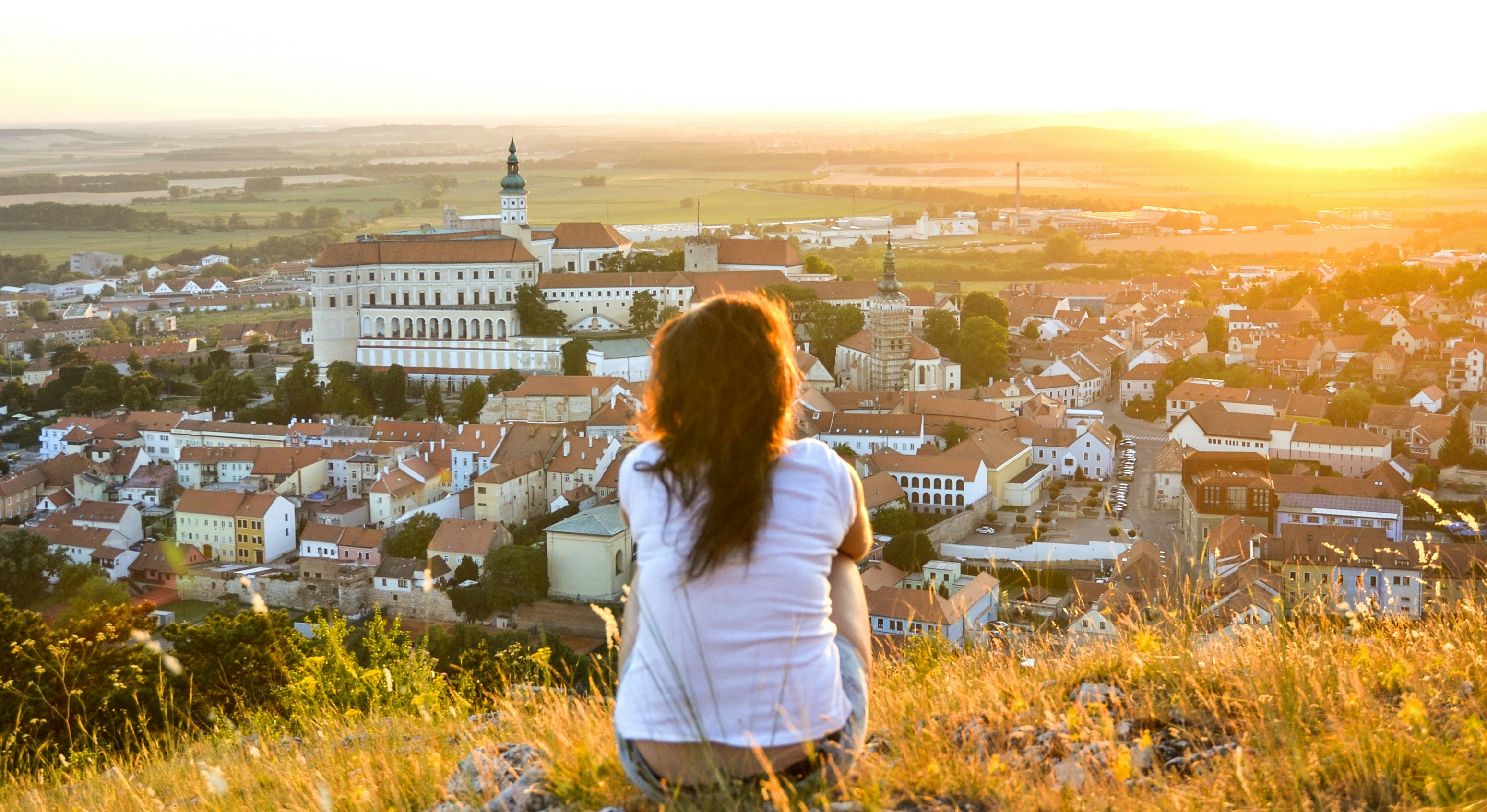
June to August is best for live music and festivals
Summer in the Czech Republic brings long, warm days and plenty of outdoor events. Temperatures range from 20–30°C (68–86°F) in Prague and other lowland areas. Prices for accommodation peak during this time, especially in Prague, as visitors flock to the country’s biggest festivals and enjoy the extended daylight hours.
The Karlovy Vary International Film Festival in July, the most prestigious in the country, draws filmmakers and movie lovers to the famous spa town in West Bohemia. Music lovers flock to South Bohemia for the month-long Český Krumlov International Music Festival in August. For a more laid-back summer vibe, Riegrovka Live Music Festival fills Prague’s Riegrova Gardens with performances throughout the season.
A favorite summertime activity among locals is to head to Slovanský ostrov, an island at the base of the National Theatre, and rent a pedal boat for some self-propelled fun on the Vltava. Beer lovers can soak up the season in Prague’s rival beer gardens – after chugging a few at Letná Beer Garden, visitors can check out its quieter cross-town counterpart at Rieger Gardens in Vinohrady. For a mix of culture and relaxation, Kasárna Karlín, set in a former barracks, offers outdoor film screenings, concerts, and exhibitions, along with a café housed in a former swimming pool hall.
Summer is also ideal for exploring Prague’s hidden retreats, such as the Vyšehrad fortress, which offers picnic spots, dog-friendly green spaces, and stunning city views. Outside Prague, Mariánské Lázně's UNESCO-listed spa district is at its most vibrant in summer, when visitors can enjoy the warm weather, outdoor mineral springs, and the famous Singing Fountain’s nightly water-and-light performances, which only run from May to October.
This article was adapted from Lonely Planet’s Prague & Czechia guidebook, published in June 2023.






